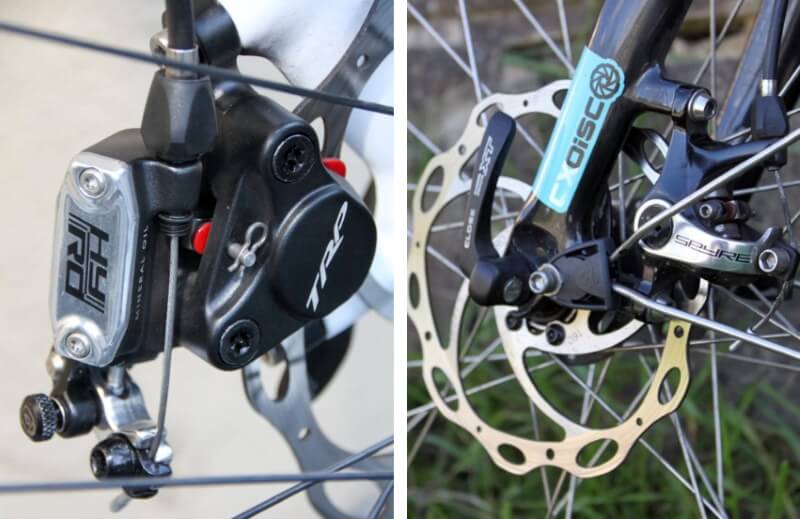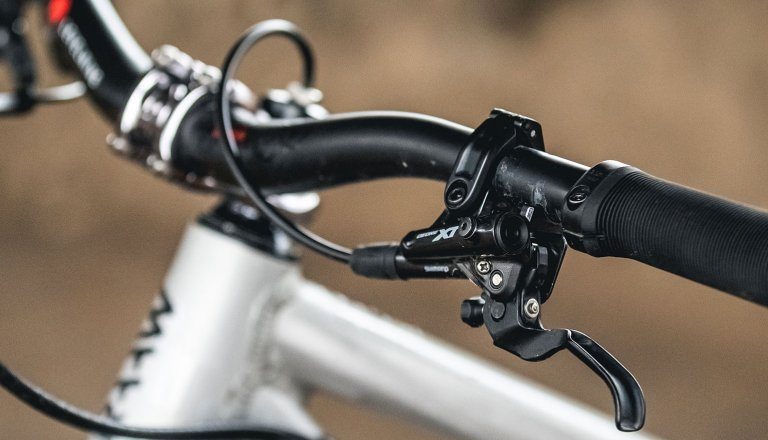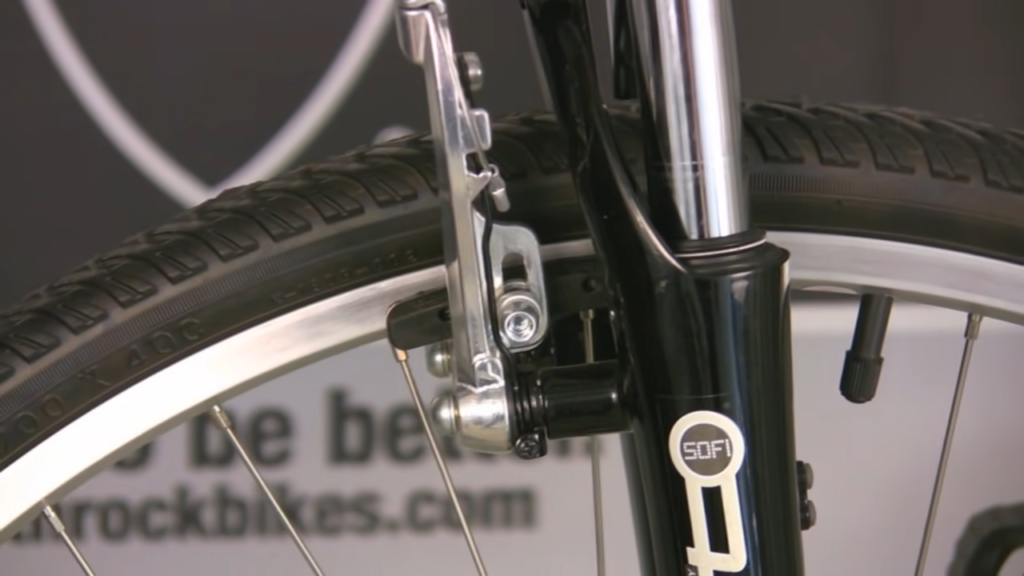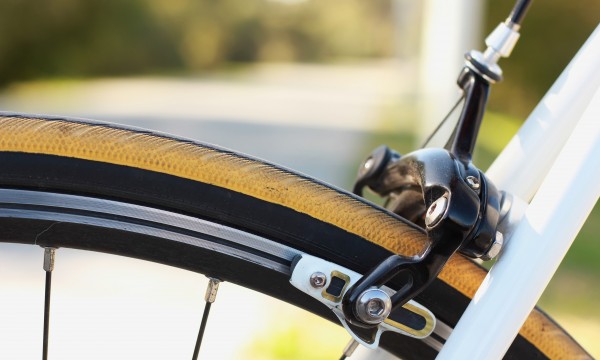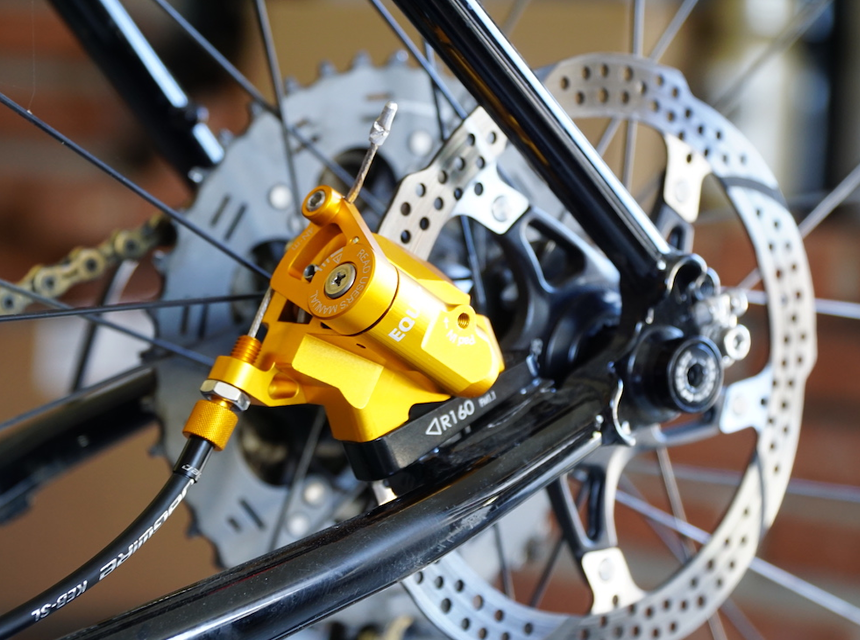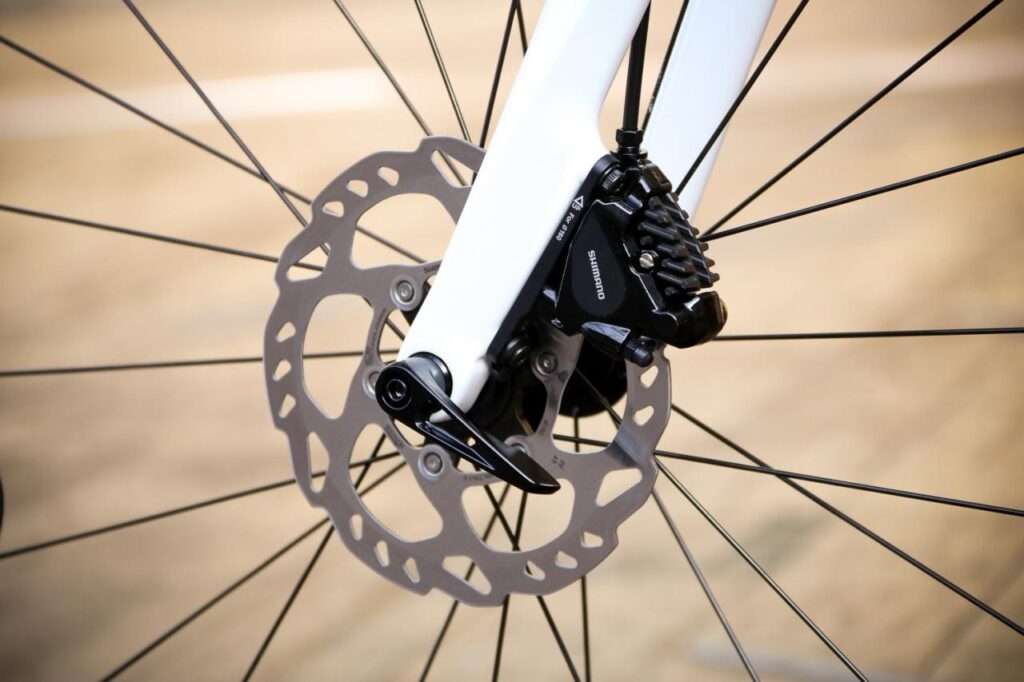- Trails
-
Bikes
-
Gear
-
Tips & Tricks
-
About us


Brakes are one of the most important features on a bike, no matter which type you’re using. There are a couple to choose from, including rim brakes like the cantilever vs V brakes. Though they both have the same basic function, there are a few differences that are worth noting when choosing a brake system for your bike.
For instance, these brakes require different cable management, brake levers, and brake pads. Some parts are interchangeable but you need to know which ones these are if you ever decide to swap out your brake system. If you’re unsure what the difference is when comparing V brakes vs cantilever brakes, the following information can help you figure out the ins and outs of these options.
So what are cantilever brakes? Cantilever brakes are a type of rim brake that is found on cyclocross bikes, cross-country touring bikes, and even the older styles of mountain bikes. They are symmetrical since they use a center-pull mechanism and identical brake arms. There is a pulley attached to a brake cable, with another cable running through it that connects the two caliper brake arms. When you squeeze the brakes, the caliper arms squeeze the rim braking surface to slow you down.
Are cantilever brakes good? Cantilever rim brakes, like the Avid Shorty Ultimate Front Cantilever Brakes, have a few benefits to consider. They are lightweight, adjustable, and inexpensive. They are also compatible with most of the standard road levers, so you don’t need any type of adapter to install them.
There are also some issues with cantilever brakes to consider before choosing them for your bike. These brakes are made of several parts, they have pads that are difficult to install and adjust, and they don’t use any spring tension centering screws, which makes it tricky to align the brakes.
What is V brake? V type brakes are also referred to as linear-pull brakes or direct-pull brakes. The CNC V Brake Set and other V brake systems feature a cable that is attached to one side and connected to a metal tube referred to as a noodle holder. The cable travels over the tire where the brake cable anchor bolt on the other brake arm holds it in place. There is also a rubber piece, referred to as a boot, which is located on the end of the noodle. This boot keeps dirt out of the noodle, keeping it at the cable clean.
V brakes are quite powerful, which is why they are most commonly found on mountain bikes Trusted Source Mountain biking and cycling safety There are lots of great cycling tracks and mountain biking trails in NSW national parks. These safety tips will help you prepare for all conditions so you can ride safely and responsibly. www.nationalparks.nsw.gov.au , off-road bikes, and gravel bikes. They work well on wet or muddy wheels, due to the heavier makeup. They are also easy to set up, so you can add them to your bike quickly and easily. Some cyclists also prefer to replace cantilever brakes with V-brakes.
V brakes need a lever that can give you a powerful brake pull, so if you want to use them with a road bike lever, you need an adapter to ensure it functions properly. They also don’t look as aesthetically pleasing as the cantilever style of brakes.
If you’re looking for a new brake system Trusted Source Bicycle Requirements Business Guidance This regulation increases the safety of bicycles by establishing, among other things, requirements for assembly, braking, protrusions, structural integrity and reflectors. Bicycles that fail any of the requirements are banned under the Federal Hazardous Substances Act. www.cpsc.gov for your bike but aren’t sure which is right for the type of bike or activity you enjoy, the following sections can help. They cover the similarities and differences between canti vs V brakes.
The mechanical advantage refers to the leverage, which is as similar in brake systems as it is in tools. The more a tool amplifies your input force, the more powerful the leverage will be. When it comes to brake systems, cantilever brakes can be adjusted as needed for increased or decreased mechanical advantage. This is done by altering the length of the cable and the pulling angle. V brakes have a fixed mechanical advantage, though it’s quite high, making it more powerful right from the start, even with a smaller squeeze of the lever.
Most V brakes and cantilever brakes are cable-actuated, though there are some hydraulic rim brakes to pick from. These are rare since they aren’t too popular with bikers.
Cantilever and V brakes use different brake levers and pads since these two brake systems require different mechanical advantages. The brake pads are also specialized, so can’t be used on both brake systems. The cantilever brake pads have a smooth post that needs to be attached to the brake arms using bolts and washers. The V brake pads include an entire attachment system that includes a bolt that protrudes from the pad and oblong washers for angle modification.
Brake mounting bosses, also called braze-one, have been standardized over the years, so they are usually interchangeable between cantilever and V brakes. The exception is the mounting bosses used for older touring bikes from the mid-80s. These braze-ones were narrower and designed to be used on cantilever brakes for smaller tires.
Though the setup of the cable isn’t the same, the braking mechanism on both of these brake systems is almost identical. You use the brake lever to pull the cable, which then rotates the brake arms and forces them to grab the rim. The pressure of the brake pads on the rim slows down your bike. When you release the lever, the brake arms are pushed back to their usual position using powerful springs, allowing you to go faster.
The tire clearance refers to how much space there is between the tire and the other bike parts, including the brakes. The cantilever brakes have less tire clearance than the V brakes, which is better since this means that less mud and other debris can collect in there. Of course, the less tire clearance, the fewer options you have when swapping out the tires. For instance, a road bike has less tire clearance than a mountain bike, so you can add thinner tires to the mountain bike but can’t add thicker ones to the road bike without significant brake alterations.
Cantilever brake systems are already compatible with brake shifters, which is why these are found on cyclo-cross or touring bikes. V brakes don’t have this capability, though there are a few drop bar brake levers that have been designed for use with this brake system. They aren’t easy to install, though, since those brake levers can only be used with a separate shifting system or a Travel Agent adapter to increase the pull of the cable. You can also use mini V brakes, though the result is poor tire clearance.
Cantilever to V brake conversion can be tricky, though not impossible. We’ll cover the process for each conversion below.
Swapping out V brakes to install cantilever brakes isn’t easy since you won’t have a cable hanger already installed over the bike’s fork. To remedy this issue, there are two options for the front brake. One is adding a cable hanger that is attached right to the fork or one that you can wind around the steerer to make it part of the headset. For the back brake, attaching an adapter to the binder bolt or seat post are the only option.
The cantilever brake system also needs a lever with a lower mechanical advantage for more movement of the brake arms when the lever is pulled.
If you want to convert cantilever to V brakes, you can’t use the final cable stops since cantilever brakes pull from the center and V brakes pull from one side. This will require you to bypass that section of the cable hanger, assuming your frame allows for this method.
If it doesn’t, then you’ll need to add a long housing between the brake lever and the brake. This can be attached to the bike frame using zip ties. It won’t look pretty but it will function as it’s supposed to.
You can also purchase a few clamp-on cable stoppers and attach them to the frame’s top tube to create the cable housing you need for this conversion.
You’ll also need to swap out the brake levers for those with higher mechanical advantage and install the proper brake pads,
Though cantilever and V brakes aren’t identical, they do share a few features. This doesn’t mean that they both have the same advantages, though. The cantilever brakes have better tire clearance, are compatible with brake shifters, and have a cool retro look.
The v brakes offer better leverage, which makes them more powerful, plus they don’t include a transverse cable, which means less damage and a more discrete profile. They are more popular, so have more options available. This brake system is also easy to set up and adjust when needed. All of these features may help your decision when choosing between V brakes vs cantilever brakes.
